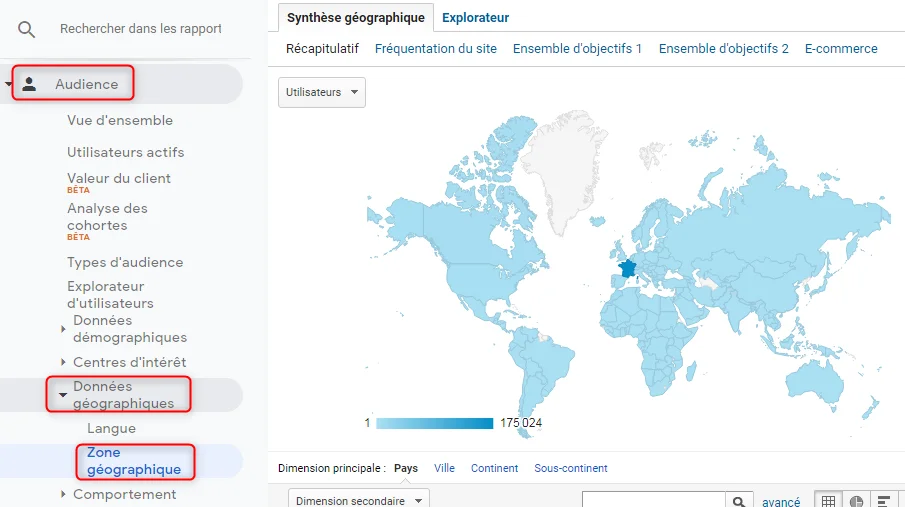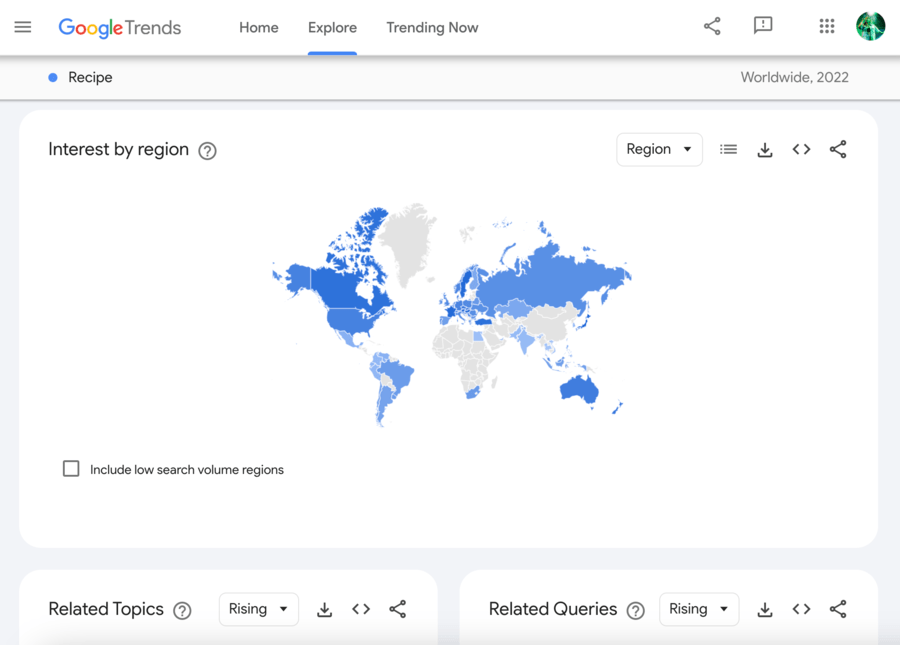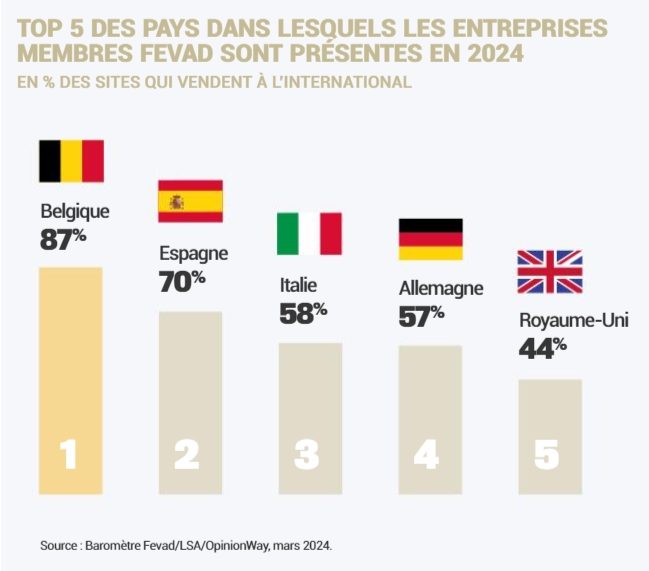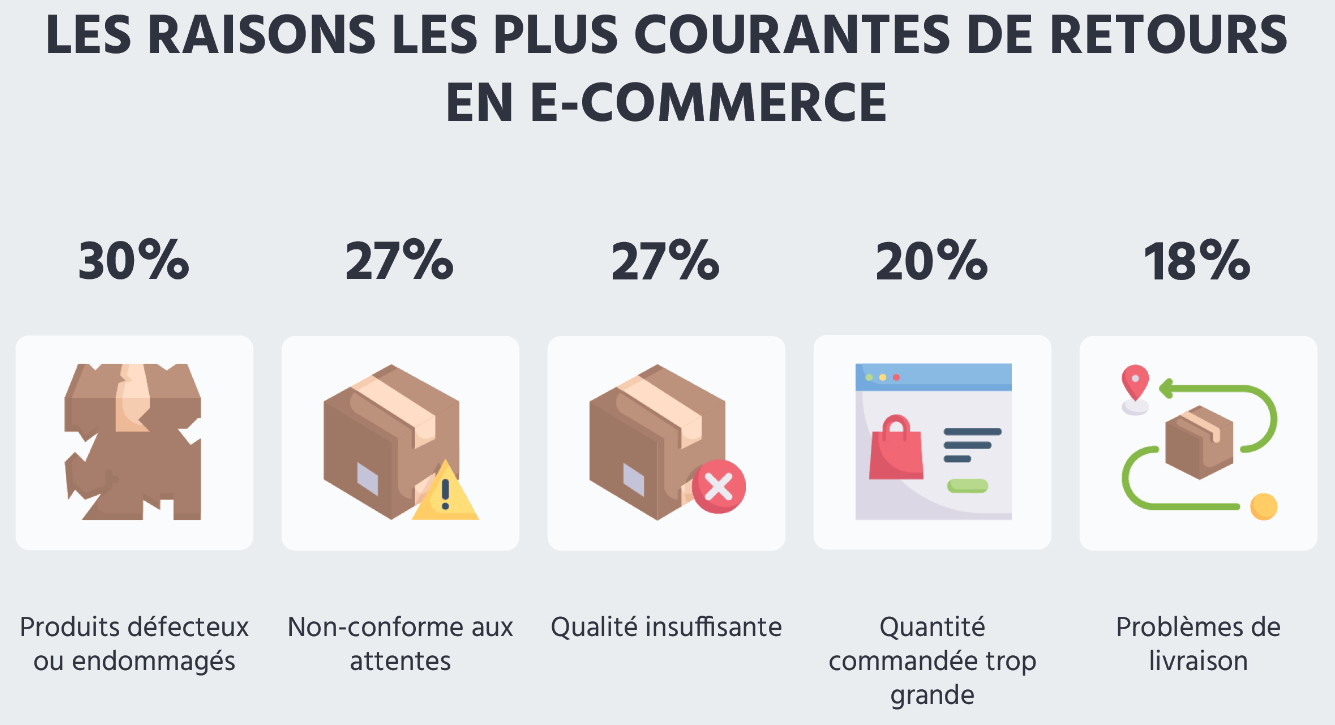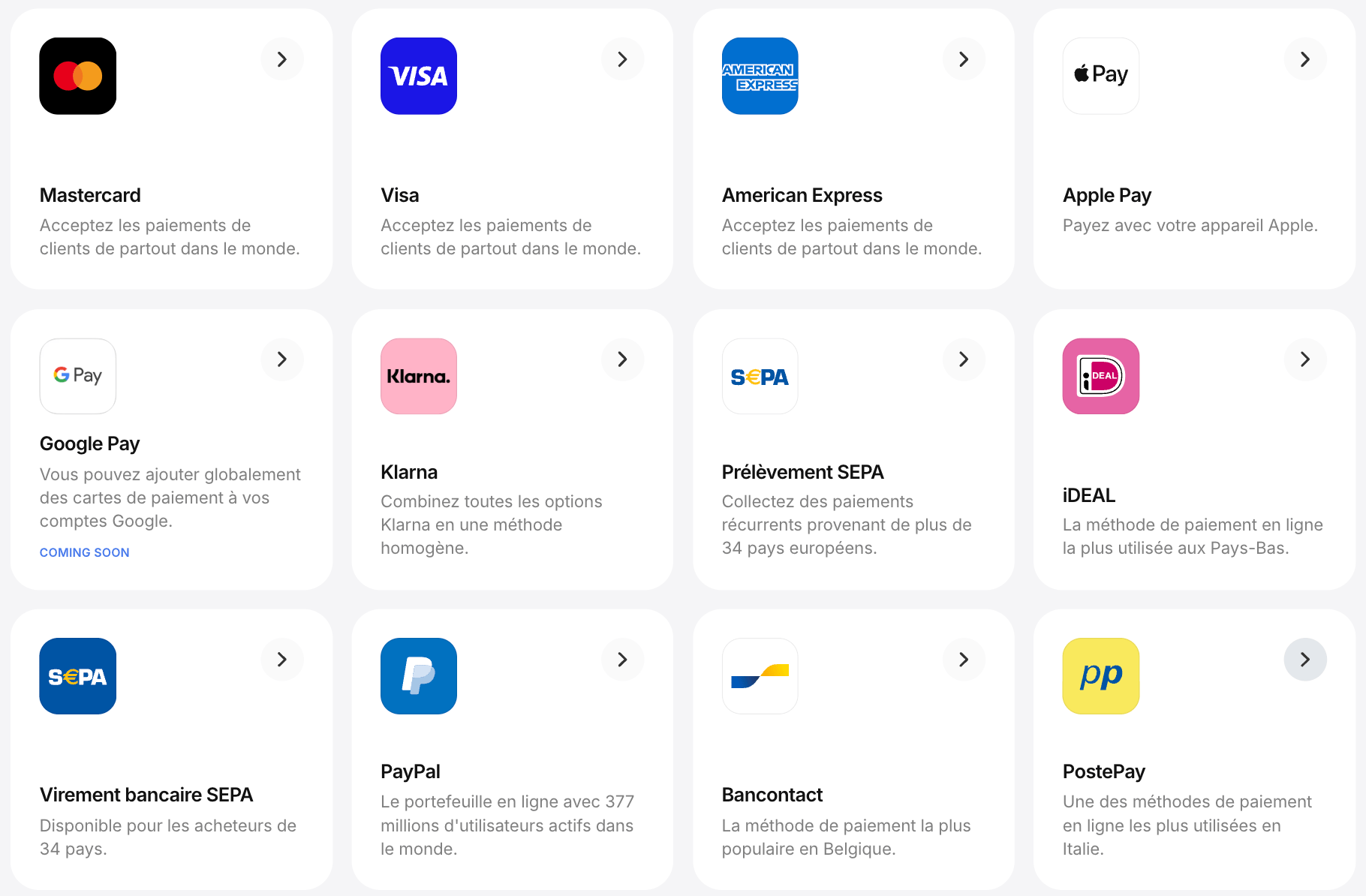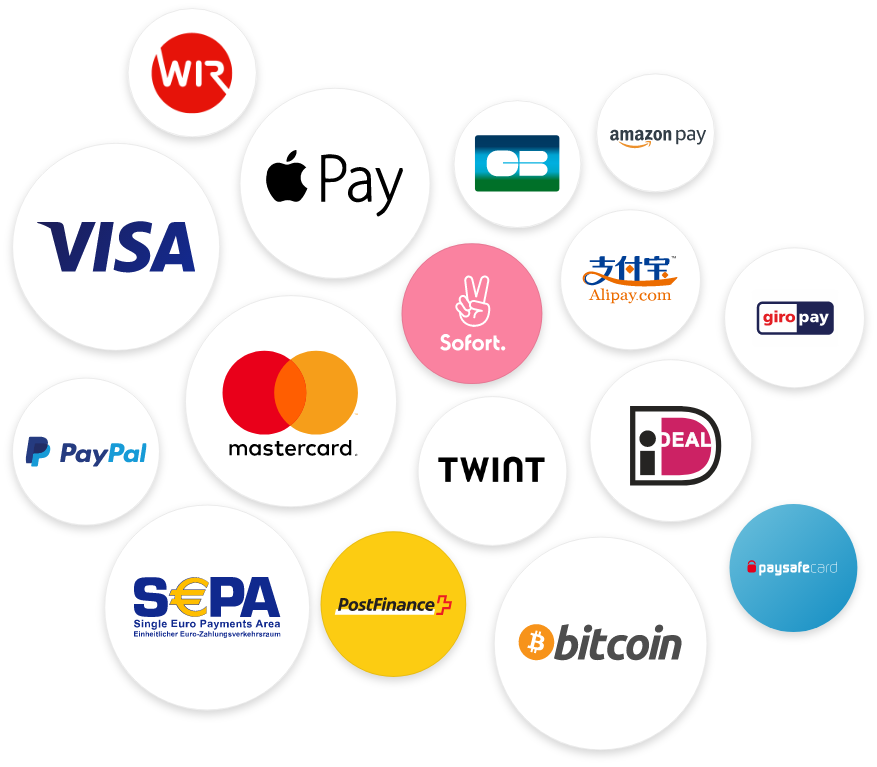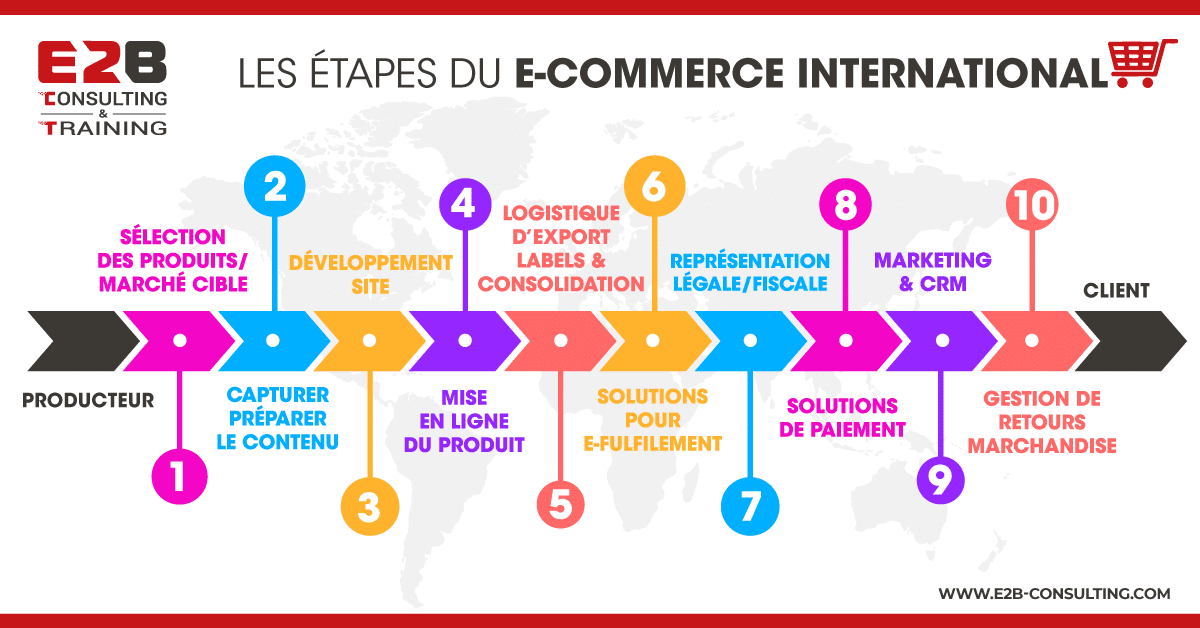5 tips to launch your PrestaShop internationally!
Internationaliser votre boutique PrestaShop représente une opportunité de croissance considérable.
Cependant, se lancer à l’international demande une préparation minutieuse et une stratégie bien pensée.
Aujourd’hui, nous vous partageons 5 conseils pour réussir votre expansion internationale 🚀
1. Conduct a quick market study
Before launching, it’s essential to understand the specificities of the markets you’re targeting to adapt your offer and maximize your chances of success.
Analyze your commercial potential
Start by evaluating the potential of your products in foreign markets.
Use Google Analytics to identify international visitors already present on your PrestaShop site. This data often reveals unexpected latent demand.
Also observe your customer feedback and unmet demands from abroad.
Study local demand
For each target market, carefully analyze local demand.
Google Trends will help you identify search trends by country and compare interest in your product categories.
Consult local marketplaces (Amazon.de for Germany, Allegro for Poland) to observe best-sellers and prices in your sector.
Analyze the competition
Identify your main competitors in each market. Examine their pricing strategies, delivery methods, and marketing approach.
Tools like SimilarWeb or SEMrush will help you analyze their traffic and acquisition sources.
Also note mistakes to avoid by observing negative customer reviews of your competitors.
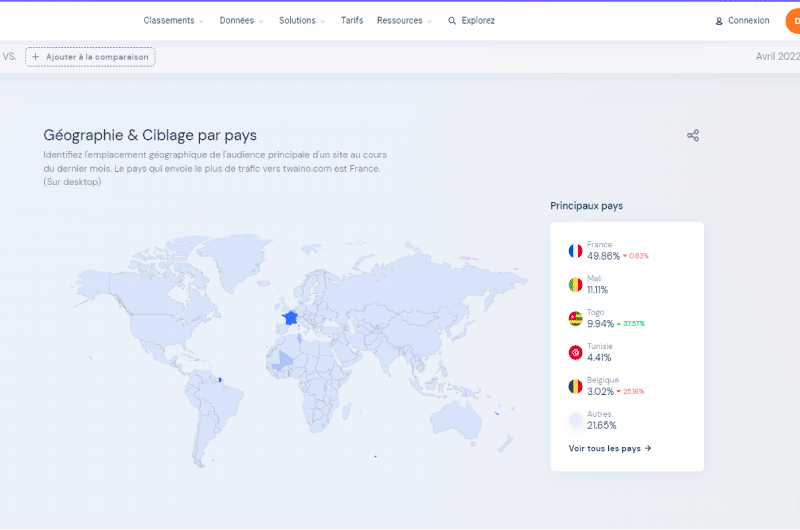
Identify regulatory barriers
Each country presents its own regulatory constraints. Find out about:
- Specific product standards (CE for Europe, certification for certain products)
- Mandatory legal notices
- Consumer protection rules (withdrawal periods, warranties)
- Customs restrictions and import taxes
- Data protection requirements (GDPR in Europe)
Prioritize your markets
Based on your study, establish a decision matrix crossing commercial potential and ease of access.
Start with markets presenting the best opportunity/complexity ratio.
Neighboring countries or those sharing your language often constitute ideal priority targets to test your international approach.
We recommend the various annual FEVAD studies.
2. Start with translation
The first barrier to entry in a foreign market is language.
A carefully translated store will inspire confidence in your international customers.
Prioritize your translations
Faced with the magnitude of the task, adopt a progressive approach. Start by translating essential elements that directly impact conversion:
- Product pages of your best-sellers
- The complete ordering process (cart, checkout funnel, confirmation)
- Mandatory legal pages (T&C, privacy policy, legal notices)
- Error messages and system notifications
- Transactional emails (order confirmation, shipping)
Use PrestaShop translation resources
PrestaShop facilitates internationalization with powerful built-in tools.
First install official language packs from your back-office. These packs cover the administrative interface and system elements of your store.
Use the integrated translation tool that allows you to manage all your translations.
For a complete translation of your PrestaShop store, we invite you to use Reversia.
Choose the right translation approach
For strategic content (product sheets, sales pages), prioritize human proofreading.
You can use native translators who understand the cultural and commercial nuances of each market.
For voluminous but less critical content (technical descriptions, FAQ), you can use automatic translation as a working base.
Adapt, don’t translate literally
Localization goes beyond simple translation.
Adapt your marketing messages to local cultural references.
For example, sales arguments that work in France may be different in Germany (where technical quality is valued more) or in Italy (where aesthetics often comes first).
Also adjust your examples, testimonials and use cases so they resonate with your local audience.
Organize your translations efficiently
Create a terminological glossary for each language to maintain consistency.
Document specific translation choices (for example, how to translate your category names or product characteristics).
For all this, you can use Reversia.
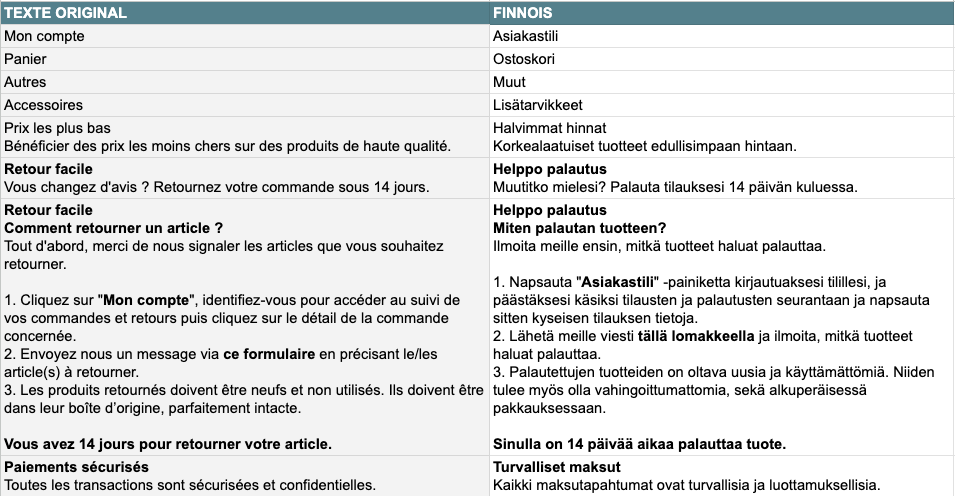
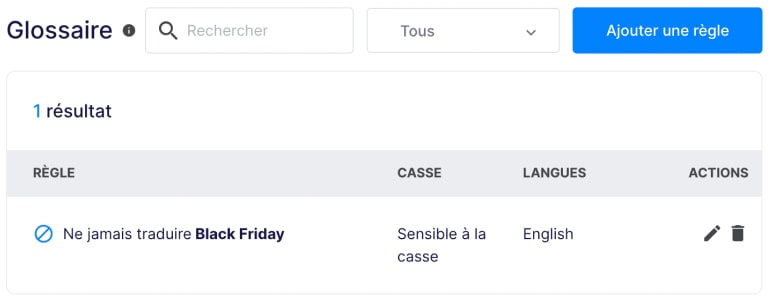
Optimize for international SEO
Also translate your SEO elements: meta tags, URLs, image alt attributes.
Conduct keyword research for each market, as search terms vary significantly from one country to another.
For example, “baskets” in France becomes “sneakers” in English, but also “turnschuhe” in Germany.
Configure hreflang tags correctly to tell search engines about the different linguistic versions of your pages.
Test and validate
Before launch, have your translated store tested by native speakers.
Check not only linguistic accuracy, but also the overall user experience.
Make sure all elements are translated, including error messages, tooltips and notifications.
A single untranslated element can break trust and drive away a potential customer.
3. Select the best logistics solution
Logistics can make or break your international expansion.
Choose solutions adapted to each market to guarantee an optimal customer experience.
Evaluate your logistics options
For international business, three main strategies are available:
1. Direct shipping from your warehouse
- Advantages: total control, simplified inventory management, reduced fixed costs
- Disadvantages: longer delivery times, customs fees, risk of customer dissatisfaction
**2. Local storage in target countries**
- Advantages: fast delivery, no customs fees, better customer experience
- Disadvantages: high initial investment, complex inventory management, risk of overstocking
**3. Hybrid solutions (fulfillment, dropshipping)**
- Advantages: flexibility, minimal investment, ability to test quickly
- Disadvantages: reduced margins, less control over service quality
Choose the right carriers
Systematically compare carriers on several criteria:
- **Geographic coverage**: check service quality in your target countries
- **Delivery times**: prioritize speed for certain markets (Germany, UK)
- **Rates**: negotiate pricing grids adapted to your volumes
- **Additional services**: real-time tracking, insurance, signature delivery
- **PrestaShop integration**: prioritize carriers with official modules
Major international players (DHL, UPS, FedEx) generally offer the best reliability/coverage compromise.
Don’t hesitate to combine several carriers according to geographical zones.
Manage customs efficiently
Customs formalities often represent a psychological barrier for customers. Simplify this step as much as possible:
- Offer DDP delivery (Delivered Duty Paid) where you handle customs fees
- Clearly display any additional fees before order validation
- Properly prepare your shipping documents (commercial invoice, CN22/CN23 declaration)
- Use appropriate customs codes (HS codes) to avoid blockages
- Integrate an automatic import tax calculation module
Optimize your logistics costs
The profitability of your international expansion largely depends on your control of logistics costs:
- Negotiate preferential rates based on your forecast volumes
- Regularly analyze your data to identify optimization opportunities
- Consider partnerships with local logistics providers for priority markets
- Pool shipments when possible (grouped orders)
- Define free shipping thresholds adapted to each market
Configure PrestaShop for international logistics
Fully exploit PrestaShop’s native features:
- Create precise geographical zones (European Union, outside EU, specific zones)
- Define different carriers according to zones and weights
- Set shipping cost calculation rules (weight, price, dimensions)
- Activate country restrictions if certain products cannot be shipped everywhere
- Configure personalized messages on delivery times by zone
Manage international returns
A clear and fair return policy is essential to reassure international customers:
- Offer prepaid return solutions for your main markets
- Establish partnerships with local pickup points to facilitate returns
- Clearly communicate your return policy in the local language
- Consider refund without return option for low-value products
- Integrate an automated returns management module in PrestaShop
4. Set up local payments
International customers expect to be able to use their usual payment methods, in their local currency.
Activate relevant currencies
Multi-currency management is fundamental to inspire confidence and facilitate purchase decisions:
- Only activate currencies of countries you actually target
- Configure automatic exchange rate updates (daily or bi-daily)
- Define realistic exchange margins (1-3%) to cover fluctuations
- Always display prices in local currency from arrival on site
- Use geolocation to automatically suggest the right currency
Integrate local payment methods
Each market has its payment preferences. Ignoring these particularities can drastically reduce your conversion rate:
Europe:
- **Germany**: SEPA, Sofort Banking (instant payment), invoice (Rechnung)
- **Netherlands**: iDEAL (used by 60% of online buyers)
- **Belgium**: Bancontact, iDEAL
- **France**: Bank card, PayPal, installment payment
- **Italy**: Bank card, PayPal, PostePay
**International:**
- **United Kingdom**: Debit card, PayPal, Apple Pay/Google Pay
- **United States**: Credit card, PayPal, Apple Pay, Affirm (installment payment)
- **China**: Alipay, WeChat Pay, UnionPay
- **Japan**: Konbini (in-store payment), JCB, Rakuten Pay
Choose the right payment gateway
Prioritize solutions that combine international coverage and PrestaShop integration:
- **Stripe**: excellent for global coverage with multi-currency support
- **PayPal**: recognized worldwide, facilitates cross-border payments
- **Adyen**: ideal for high volumes with support for many local methods
- **Mollie**: perfect for Europe with all local payment methods
- **Worldpay**: complete solution for businesses with strong international growth
Manage taxes efficiently
International taxation can quickly become complex. Simplify your life:
- Always display prices including tax for consumers (B2C)
- Configure VAT rules by country in PrestaShop
- For EU, respect distance selling thresholds (€10,000 per country)
- Consider registering for OSS regime to simplify declaration
- Integrate an automatic tax calculation module (Avalara, Vertex)
Communicate about your payment options
Trust also comes through transparency:
- Display accepted payment method logos from the homepage
- Create a dedicated page explaining your payment options by country
- Reassure about security with badges (SSL, PCI-DSS compliance)
- Clearly mention your refund policy
- Offer customer support for payment-related questions
5. Go for it! Even if it’s not perfect
Don’t seek perfection from the start. Adapt your service offering to your actual capabilities and gradually improve your international presence.
Adopt a pragmatic approach
The quest for perfection is often the enemy of progress. It’s better to launch with 80% preparation and improve continuously than to wait indefinitely for the ideal moment. Here’s how to proceed intelligently:
Temporarily disable what you can’t manage:
- Phone service if you don’t have a multilingual team
- Live chat in languages you don’t master
- Certain payment methods complex to implement
- Express delivery if you can’t guarantee deadlines
**Offer suitable alternatives:**
- Multilingual contact form instead of phone
- Complete and detailed FAQ in each language
- Email support with announced response time
- Simple chatbot for frequent questions
Start small, think big
**Phase 1: The cautious test (0-3 months)**
- Launch on 1-2 markets similar to yours (same language or neighboring countries)
- Translate only essentials (best-sellers, key pages)
- Use simple logistics solutions (direct shipping)
- Accept PayPal + bank card only
**Phase 2: Measured expansion (3-6 months)**
- Add 1-2 new markets based on learnings
- Expand the range of available products
- Integrate popular local payment methods
- Optimize logistics on markets that work
**Phase 3: Optimization (6-12 months)**
- Develop local presence (storage, partnerships)
- Offer your entire catalog
- Add premium services (express delivery, phone support)
- Consider localized marketing campaigns
Measure to progress
Define realistic KPIs for each market:
- Conversion rate by country (don’t compare with your domestic market)
- Average basket in local currency
- International customer acquisition cost
- Return rate and reasons by market
- Customer satisfaction (NPS) by country
Use Google Analytics and PrestaShop reports to track these metrics in real time.
Automate progressively
Once processes are validated, automate to gain efficiency:
- Automatic translation of product sheets with human revision
- Multilingual follow-up emails according to predefined scenarios
- Automatic calculation of shipping costs and taxes
- Stock updates synchronized between markets
- Automated reporting by country
Build your international team
As you grow:
- Recruit natives for main markets (freelance then permanent)
- Train your existing team on cultural specificities
- Create documented processes for each market
- Establish local partnerships (influencers, retailers)
- Consider local legal structure for big markets
Accept and learn from your mistakes
Mistakes are inevitable and educational:
- Clumsy translation? Correct quickly and communicate with humor
- Underestimated delivery times? Offer a commercial gesture and adjust
- Product that doesn’t work? Pivot to what works
- Higher returns? Analyze causes and adapt
The important thing is to react quickly and learn from each experience
Translate and launch your store internationally with Reversia!Réessayer


